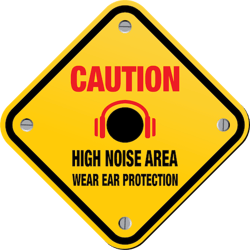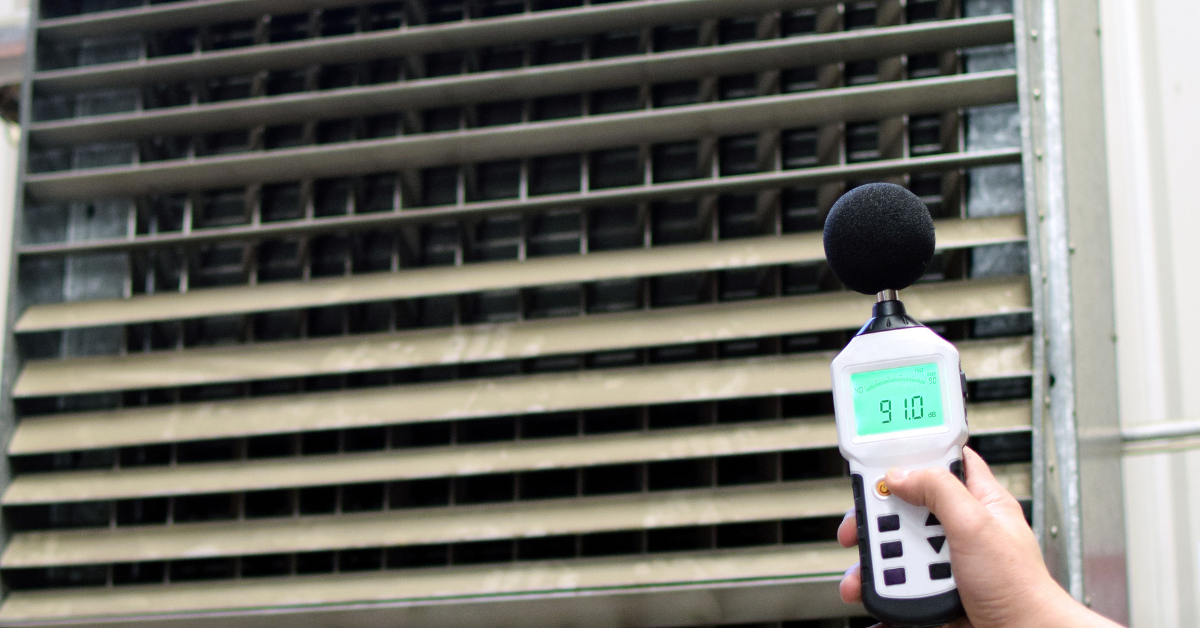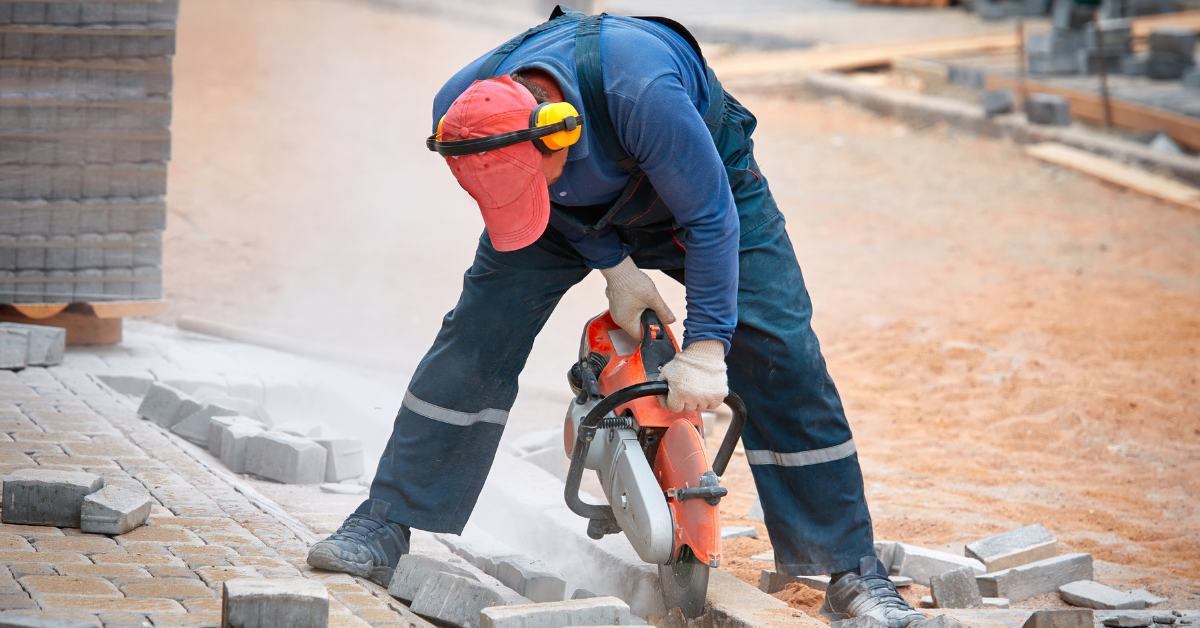Right now, about 48 million Americans are living with some level of hearing loss. And about 22 million are exposed to hazardous noise levels at work, meaning that without intervention more are being put at serious risk of developing an irreversible disability.
Many businesses require people to work in noisy environments and you may not be able to reduce the noise levels or even eliminate them. But if you manage such a business, a hearing conservation program can protect your workers from long-term, Noise-Induced Hearing Loss.
Let's examine what a hearing conservation program is and how to implement one.
What Is a Hearing Conservation Program?
The US Bureau of Labor Statistics monitors hearing loss cases in the workplace. The latest available data from 2019 shows that 14,500 private industry workers suffered hearing loss in the workplace. The highest prevalence occurred in the manufacturing industry.
A hearing conservation program is not just a nice thing to do to protect employees. The OSHA standard for Occupational Noise Exposure - 29 CFR 1910.95, sets out clear guidelines to help you as you create a program for your business.
A hearing conservation program is a set of procedures in your business for:
- Measuring noise levels
- Providing free hearing (audiometric testing) exams
- Providing hearing protection
- Training workers in hearing protection
- Periodic evaluations of the effectiveness of hearing protectors
- Updating per new tools/equipment/schedules
All new workers should be trained before they are exposed to high noise levels.
If you do not have a hearing conservation program or do not keep up with it, you could be exposing your workers to the loss of their hearing which they can never get back. Employees could file workers' compensation claims against you for hearing loss caused at work.
What Is Occupational Noise Exposure?
Noise is an inevitable by-product of many industrial processes. The extent of the damage it causes depends on the intensity of the noise and the duration of exposure. The purpose of an OSHA hearing conservation program is to protect workers from losing or impairing their hearing if they are working in noisy environments.
The OSHA noise standard sets the limit for implementing a Hearing Conservation Program at 85 decibels for 8 hours since some workers will experience a hearing loss at that level while others will not. It is a very good way of protecting a maximum number of exposed workers without overprotecting workers by making the exposure limit too restrictive. The OSHA standard allows workers to be exposed to certain levels of noise during their work shifts. That level is 90 decibels, measured on the A Scale at a slow response, or dBA.
If a worker is exposed to exactly 90 dBA for exactly 8 hours, they are said to be exposed to 100% of their allowable noise dose.
If they are exposed to half that amount, or 85 dBA for 8 hours, they are said to receive 50% of their allowable noise dose and that is the level at which OSHA requires a Hearing Conservation Program to be implemented.
Step One: Measure Noise Levels
First, you need to understand the level of noise you are dealing with. You can do this with a traditional Sound Level Meter.
Some apps can be downloaded to a cell phone but they should not generally be considered a serious diagnostic instrument.
The OSHA standard requires that all sounds between 30 and 130 decibels, measured on the A Scale at the slow response, be included in the assessment of a worker's noise exposure.
The accuracy of the preferred sound level meter used is usually the Type II instrument as it measures with an accuracy of +/- approximately 1.0 decibel and is referred to as a General Purpose or Survey Instrument while the Type I instrument has an accuracy of +/- 0.7 decibels and is referred to as a Precision Instrument.
Type I is more likely to be used for noise engineering work and Type II for simple sound level readings.
The preferred instrument to use for measuring a worker's actual noise exposure measures their dose. Not coincidentally, it is called a noise or audio dosimeter (or dose meter). This dosimeter is worn by an employee for the length of their work shift on their shoulder so that it travels everywhere that they go and is consequently exposed to all of the noise they are exposed to.
If an employee were sitting at a machine for exactly 8 hours and the noise level was exactly 90 decibels, the dosimeter would yield an exposure of 100% of their OSHA permissible exposure, and 8 hours at 85 decibels would yield a dose of 50% of their permissible exposure and these are the prime criteria for the OSHA noise standard.
As a worker travels around the shop or worksite for their full shift the noise levels will vary and the rate at which the dosimeter accumulates dose will vary accordingly. The dose at the end of the shift will reflect what the worker was exposed to as they did their job regardless of where they went and what they did. This is the beauty of a dosimeter as it is exposed to everything the worker is exposed to and it is almost impossible to accurately measure true exposure any other way.
The OSHA HCP states that an HCP is based on the degree of noise exposure measured during the survey. The allowable OSHA noise exposure or Permissible Exposure Limit is 90 dBA for a full shift. If your exposure is above 85 dBA for a full shift, you are still required to be in an HCP. If your exposure is below 85 dBA for a full shift, you are not.
To make this a little easier to work with, The Lawson Group has developed a system of Exposure Groups that match the OSHA criteria but make the exposure numbers easier to work with.
Exposures below 85 dBA are in Exposure Group A. Requirements under Group A include conducting additional monitoring when sound levels change.
Exposures between 85 dBA and 90 dBA are in Exposure Group B.
Requirements under Group B include:
- Hearing protection must be made available and worn by those who have had a shift in their hearing.
- All employees must be notified of the results of their monitoring.
- Baseline and yearly audiograms must be conducted.
- An annual training program must be implemented.
Exposures over 90 dBA are in Exposure Group C. Requirements under Group C include:
- Hearing protection must be worn.
- Engineering or administrative controls must be used to reduce exposure to 90 dBA.
- All requirements under Group B must be followed as well.
Step Two: Provide Hearing Protection
Hearing protection may be necessary but a one-size-fits-all approach for hearing protection does not work.
Remember that Personal Protective Equipment (PPE), in this case, hearing protection, is only effective if it is used and used correctly and that is not always the case.
Educating your employees is essential if you are to have a chance of an HCP working successfully and they need to understand enough about hearing protection and the need to use it correctly.
The OSHA standard calls for providing a variety of different types of hearing protectors for employees to choose from so that they can choose the best type of hearing protector that works the best for them. A person trained to fit hearing protection should help employees find the best fit.
Anyone exposed above 90 dBA or 100% dose must wear hearing protection and anyone with a noted threshold shift should wear hearing protection that attenuates noise levels to 85 dBA
Step Three: Schedule Regular Testing
Testing encompasses two areas—employees and equipment.
OSHA mandates audiometric testing for all employees who are exposed to an action level of 85 decibels or 50% or above for 8-hours. This program must be overseen by a licensed audiologist, otolaryngologist, or physician.
If medical problems are suspected, the employee must be referred for further testing. When you commence your hearing conservation program, all employees must take a baseline test.
Then, all new hires must be tested before they start work. After this, arrange for annual tests for all affected employees.
The business must keep accurate records of the test results and compare annual test results to the baseline test.
If the employee has lost the hearing ability or experienced a standard threshold shift, their PPE must be reevaluated.
 Step Four: Evaluate Your Hearing Conservation Program
Step Four: Evaluate Your Hearing Conservation Program
Every year, use feedback from audiometric testing to evaluate how effective your program is. If your team is suffering from hearing loss, go back to step one.
Reevaluate noise levels, noise reduction options, and levels of hearing protection. Keep noise exposure measurement records for two years.
Keep audiometric testing for the duration of the employee's employment.
Step Five: Training Employees
Workers who understand why they need to protect their hearing will be more motivated to wear PPE and take annual tests.
The structure of the training is up to each business. However, the two-minute introduction to hearing protection while they are being fitted for it so they still don’t understand what it is, how it works, and what it is important about it does not fit the bill and will generally lead to problems down the road.
Ready to Establish a Hearing Conservation Program?
If your employees work in a noisy environment, a hearing conservation program may be necessary. It protects your employees, allowing them to do their work with no harmful or lasting detrimental effects.
Loss of hearing is or can be devastating to an aging worker as once hearing is lost, it can not be regained and it can rob that worker of some of the joys of their golden years.
The good news is that hearing damage can stop when exposure to noise stops.
At The Lawson Group, we have the experience and expertise to help you set up an excellent hearing conservation program. We provide common-sense advice and help you to promote wellness among your employees.








